




Have you ever noticed a sticky residue on your clothes after washing them with fabric softener? This frustrating problem can leave your favorite garments feeling less than fresh. Luckily, there are several effective methods you can use to remove fabric softener residue and restore your clothes to their original softness and cleanliness.
One of the simplest ways to remove fabric softener residue is by rinsing your clothes again in plain water. This helps to dilute and wash away any remaining softener. Another effective method is to add vinegar to the rinse cycle. The acid in vinegar helps to break down the residue and leaves your clothes smelling fresh and clean.
If you prefer a natural approach, you can try using baking soda. Simply mix a tablespoon of baking soda with water to create a paste and rub it onto the affected areas. Let it sit for a few minutes, then rinse thoroughly. Baking soda is known for its cleaning and deodorizing properties, making it an excellent choice for removing fabric softener residue.
For stubborn residue, you may need to soak your clothes in a mixture of warm water and laundry detergent. Allow them to soak for at least 30 minutes before washing them as usual. This can help to loosen and dissolve the residue, leaving your clothes clean and soft once again.
Expert Tip: It’s important to read the instructions on your fabric softener bottle and follow them properly. Using too much fabric softener or not diluting it properly can lead to residue buildup on your clothes.
In addition to these methods, there are a few other expert tips you can try. For example, using a liquid fabric softener instead of a dryer sheet can help to prevent residue buildup. Additionally, avoiding overloading your washing machine can prevent excessive residue from forming. Lastly, regularly cleaning your washing machine can also help prevent fabric softener residue from transferring to your clothes.
By following these expert tips and trying these effective methods, you can easily remove fabric softener residue from your clothes and maintain their softness and freshness. Say goodbye to sticky, coated fabrics and hello to clean, comfortable garments!
Top 10 Methods for Removing Fabric Softener Buildup from Clothing
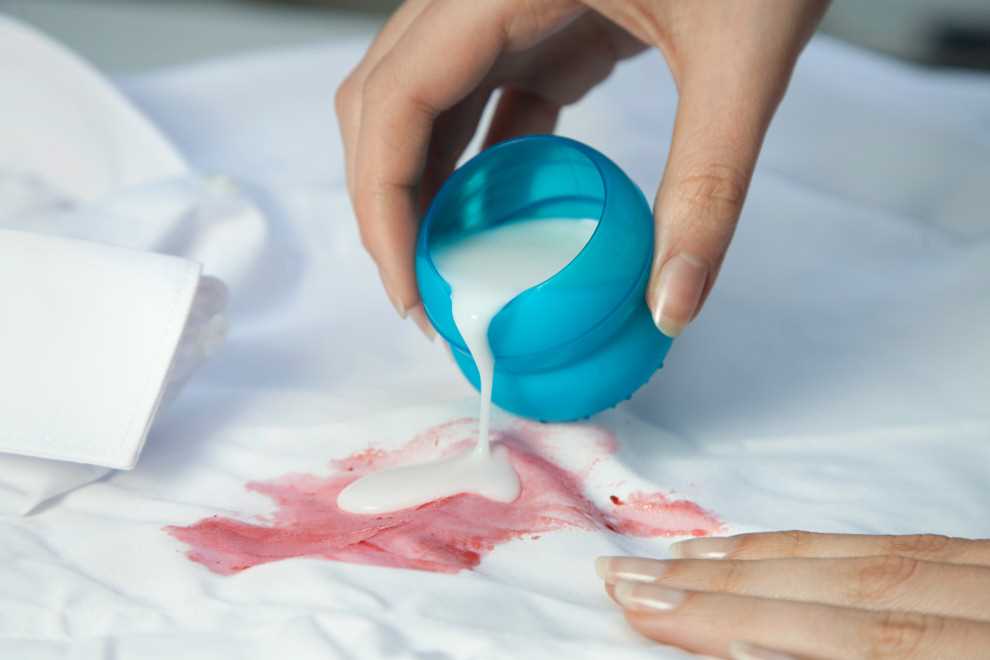
Fabric softener residue can leave clothes feeling stiff and looking dull. If you’re struggling to remove fabric softener buildup from your garments, try these effective methods:
- Vinegar Solution: Mix equal parts white vinegar and water. Soak the affected clothing in the solution for 30 minutes, then rinse and wash as usual.
- Baking Soda: Add 1/2 cup of baking soda to your regular laundry detergent, and wash the clothes as usual.
- Hot Water Soak: Fill a sink or tub with hot water and add a small amount of laundry detergent. Let the clothes soak for 30 minutes, then rinse and wash normally.
- Lemon Juice: Squeeze the juice of one lemon into a sink or tub filled with warm water. Soak the clothes for 30 minutes, then wash as usual.
- Borax: Add 1/2 cup of borax to your laundry detergent and wash the clothes as usual.
- Hydrogen Peroxide: Mix equal parts hydrogen peroxide and water. Apply the mixture to the fabric softener residue, let it sit for 10 minutes, then rinse and wash the clothes.
- Rubbing Alcohol: Dampen a cloth with rubbing alcohol and gently scrub the affected area. Rinse and wash as usual.
- Enzyme Cleaner: Apply an enzyme cleaner directly to the fabric softener buildup. Let it sit for 15 minutes, then rinse and wash the clothes.
- Ammonia: Mix a solution of 1 part ammonia and 3 parts water. Apply the mixture to the residue, let it sit for 10 minutes, then rinse and wash the clothes.
- Prewash Treatment: Use a prewash stain remover or laundry detergent specifically designed for removing fabric softener buildup. Follow the instructions on the packaging.
By using these methods, you can effectively remove fabric softener buildup from your clothing and restore their softness and appearance.
Vinegar Soak
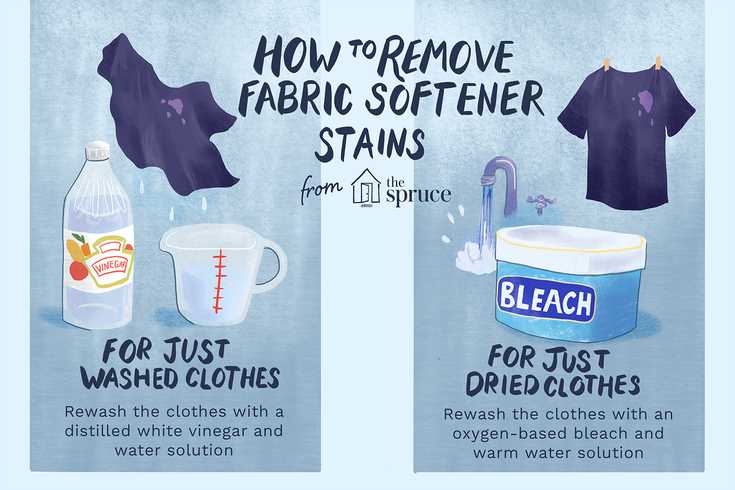
Vinegar is a versatile household ingredient that can help remove fabric softener residue from clothes. Here’s how to do a vinegar soak:
- Fill a sink or container with warm water.
- Add 1 cup of white vinegar to the water.
- Place the clothes into the vinegar solution.
- Make sure all the clothes are fully submerged.
- Let them soak for about 30 minutes.
- After 30 minutes, remove the clothes from the vinegar solution.
- Thoroughly rinse the clothes with clean water.
- Finally, wash the clothes as usual with laundry detergent to remove any lingering vinegar smell.
Once the clothes have been soaked in vinegar and washed, they should be free of fabric softener residue and fresh-smelling.
Baking Soda Treatment
Baking soda is a versatile household ingredient that can be used for various cleaning purposes, including removing fabric softener residue from clothes. Here are the steps to using baking soda to eliminate fabric softener build-up:
- Gather the Supplies: You will need a container, warm water, baking soda, and a spoon for mixing.
- Create a Baking Soda Solution: Fill the container with warm water and add 1 to 2 tablespoons of baking soda. Stir the mixture until the baking soda is dissolved.
- Soak the Clothes: Submerge the affected clothes in the baking soda solution. Make sure that the clothes are fully immersed and allow them to soak for at least 30 minutes.
- Scrub the Clothes: After soaking, take each piece of clothing and gently scrub it with your hands. Pay close attention to areas where the fabric softener residue is most visible.
- Rinse the Clothes: Once you have scrubbed all the clothes, rinse them thoroughly with clean water. Make sure you remove all the baking soda and fabric softener residue.
- Dry the Clothes: After rinsing, wring out the excess water and hang the clothes to dry. Avoid using a dryer until you are certain that the fabric softener residue has been entirely removed.
Note: This baking soda treatment is particularly effective for removing fabric softener residue, but it can also be used to eliminate other types of build-up on clothes. Additionally, baking soda can help deodorize and freshen garments, leaving them feeling and smelling clean.
Citric Acid Rinse
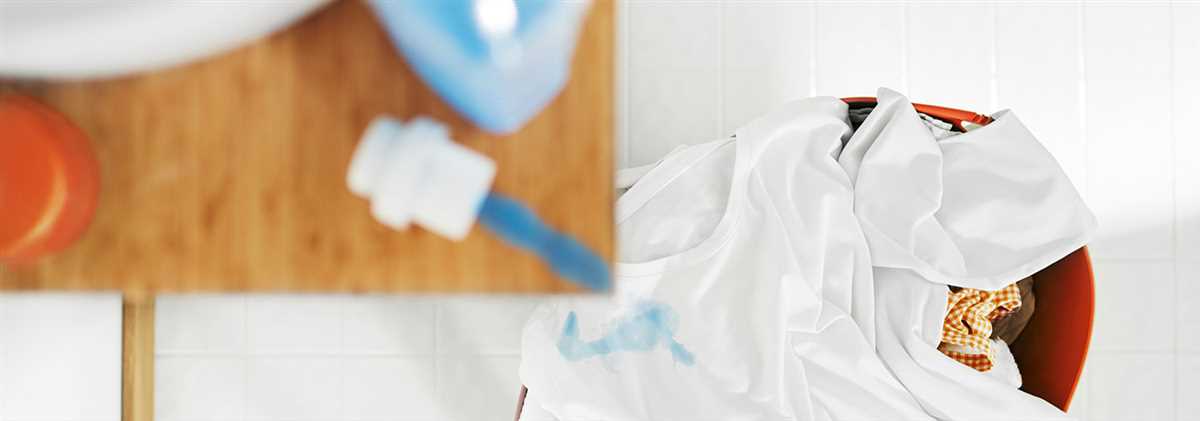
To remove fabric softener residue from your clothes, you can try using a citric acid rinse. Citric acid is a natural acid found in fruits like lemons and limes, and it can help break down and remove the residue left behind by fabric softeners.
Here is how you can use a citric acid rinse:
- Mix one tablespoon of citric acid with one cup of warm water.
- Stir until the citric acid has dissolved completely.
- Pre-soak your clothes in the citric acid solution for about 30 minutes.
- After the pre-soak, wash your clothes as usual using a mild detergent.
- Ensure that you wash all the citric acid solution out of the garments during the washing process.
- Once the wash cycle is complete, you can either air dry or use a dryer to dry your clothes.
Benefits of using a citric acid rinse:
- Citric acid is a natural and eco-friendly alternative to harsh chemical cleaners.
- It effectively helps break down and remove fabric softener residue.
- Citric acid can also help remove other types of stains and buildup on clothes.
- It leaves your clothes smelling fresh and clean.
Precautions:
- When handling citric acid, it is recommended to wear gloves to protect your skin.
- Avoid contact with eyes and keep the solution out of reach of children.
- Do a spot test on a small, inconspicuous area of the fabric before using the citric acid rinse on the entire garment.
- Follow the manufacturer’s instructions and precautions when using citric acid.
By using a citric acid rinse, you can effectively remove fabric softener residue from your clothes and keep them clean and free from buildup.
Hydrogen Peroxide Solution
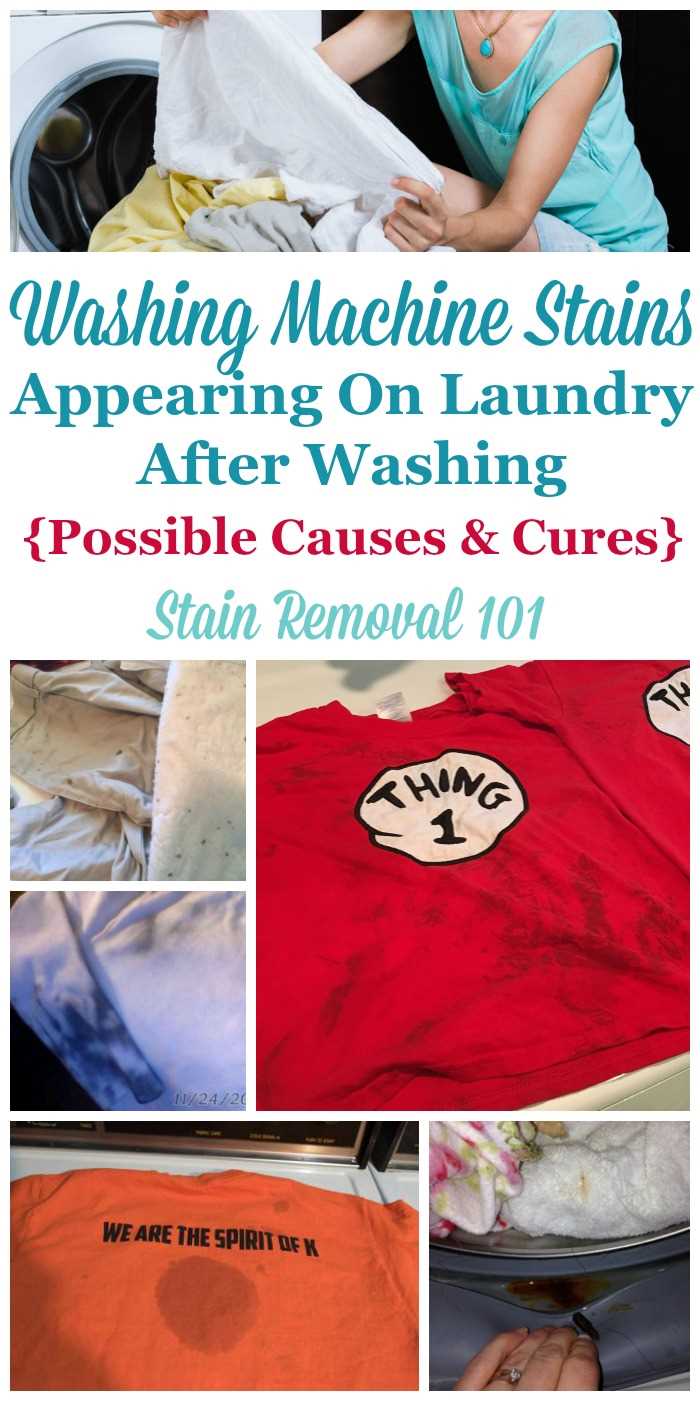
A hydrogen peroxide solution can be used to remove fabric softener residue from clothes effectively. Here is how you can use it:
- Mix: Start by mixing equal parts hydrogen peroxide and water in a container.
- Soak: Submerge the fabric with the residue in the hydrogen peroxide solution. Make sure the fabric is fully immersed.
- Soak Time: Let the fabric soak in the solution for about 30 minutes to an hour. This will help loosen the residue from the fibers.
- Scrub: After soaking, gently scrub the fabric with a soft brush or cloth to help remove any remaining residue.
- Rinse: Thoroughly rinse the fabric with clean water to remove any traces of the hydrogen peroxide solution.
- Dry: Finally, allow the fabric to air dry or follow the care instructions provided for proper drying.
Note: Before using hydrogen peroxide on colored fabrics, it is recommended to test it on a small, inconspicuous area to check for any potential color fading or damage.
Caution: When working with hydrogen peroxide, it is important to handle it carefully, as it can irritate the skin and eyes. It is also advisable to wear gloves and protect your eyes during the process. Keep hydrogen peroxide out of reach of children.
Dish Soap Scrub
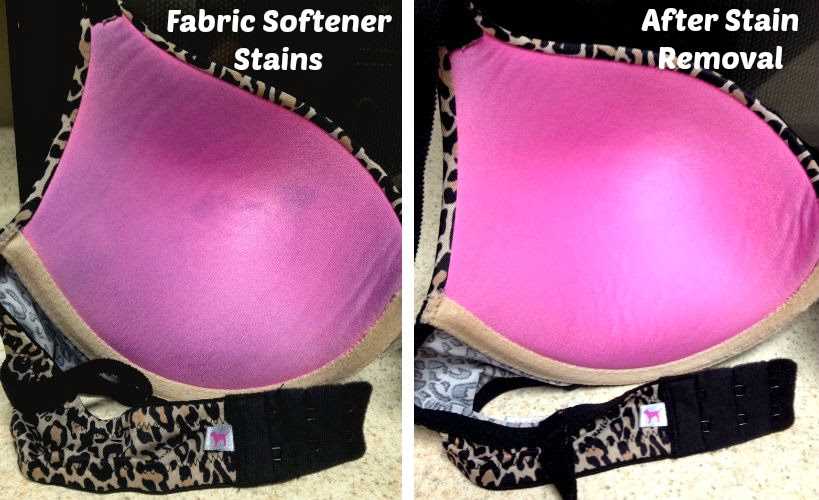
If fabric softener residue persists on your clothes even after washing, you can try using a dish soap scrub to remove it.
What you’ll need:
- Dish soap
- Soft-bristled scrub brush
Instructions:
- Start by pouring a small amount of dish soap onto the affected area of the clothing.
- Gently scrub the fabric using a soft-bristled scrub brush. Apply light pressure and make circular motions to work the dish soap into the fabric.
- Continue scrubbing for a few minutes, focusing on the areas with visible residue.
- Rinse the clothing under cold water to remove the dish soap and loosened residue.
- Inspect the fabric to see if the residue has been fully removed. If not, repeat the process until satisfied.
- Once the fabric is free from residue, wash the clothing as usual with laundry detergent to eliminate any remaining soap.
- Allow the clothing to air dry or use a dryer as per the fabric’s care instructions.
Note: It’s essential to spot test the dish soap on an inconspicuous area of the fabric before applying it to the entire garment to ensure it doesn’t cause any discoloration or damage.
FAQ
What is fabric softener residue?
Fabric softener residue is the leftover product that remains on clothing after it has been washed with fabric softener. It can leave a film or build-up on the fabric, which can make the clothes feel stiff, greasy, or less absorbent.
How does fabric softener residue affect clothes?
Fabric softener residue can affect clothes in several ways. It can make them feel stiff or less absorbent, it can leave a greasy or waxy film on the fabric, and it can even cause discoloration or staining in some cases.
What are some common signs of fabric softener residue on clothes?
Some common signs of fabric softener residue on clothes include a stiff or waxy feeling to the fabric, reduced absorbency, a greasy film on the fabric, and even discoloration or staining.
What are some effective ways to remove fabric softener residue from clothes?
There are several effective ways to remove fabric softener residue from clothes. Some methods include re-washing the clothes without fabric softener, using vinegar or baking soda as natural cleaners, and scrubbing the fabric with a brush or sponge.
Is it possible to prevent fabric softener residue from forming on clothes?
Yes, it is possible to prevent fabric softener residue from forming on clothes. Some ways to prevent residue build-up include using less fabric softener, diluting fabric softener with water before adding it to the washing machine, and using dryer sheets instead of liquid fabric softener.
How does fabric softener residue end up on clothes?
Fabric softener residue can end up on clothes when too much fabric softener is used or when it is not properly diluted before being added to the wash cycle. Additionally, if the fabric softener dispenser or the washing machine itself is not cleaned regularly, residue can build up and transfer onto clothes.
What are the signs that clothes have fabric softener residue?
Signs that clothes have fabric softener residue include a greasy or waxy feeling to the fabric, a diminished absorbency, and an overall stiff or heavy texture. Clothes may also have a lingering scent or appear dull and discolored.











